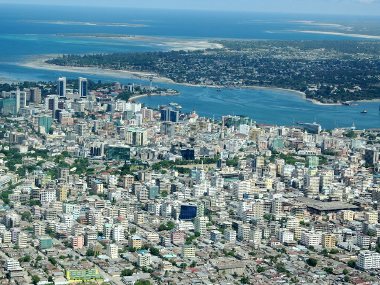The process of urbanization of societies – that is, the growth of the area and population of cities in relation to the countryside – happens with different particularities over time and in different places. However, some occurrences are noted to be similar in all cases, causing a more or less defined pattern of how certain phenomena are repeated in this context. In the case of Africa's urbanization, still ongoing, some manifestations have been repeated in relation to processes that have already taken place in developed and emerging industrialized countries.
It is clear that talking about “urbanization of Africa” is, in itself, a problematic issue, as it is about of a very large continent, with a high number of countries that have different contexts. However, in a more general idea, we can say that it was only at the end of the 20th century and the beginning of the 21st that the African continent came knowing, in fact, its urbanization process in a more intensified way, although this phenomenon has started timidly in the decade of 1950.
There are estimates made by agencies linked to the United Nations (UN) that, by 2030, the population of cities should increase 85% in the countries of the region. As such, more than half of the African population will be urban. Currently, only a third of the continent's inhabitants are. Such growth will be the result of both the rapid vegetative growth of the main cities and the intensive processes of rural exodus and metropolization of societies, something already experienced by the most advanced economies.
Among the main factors linked to the urbanization of countries on the African continent, the relative industrialization of their economies, the lower offer of employment in the countryside, the high concentration of land ownership – or, in the case of some countries, the low availability of land easily agricultural activities - and the predominance of properly urban economic activities, mainly linked to the tertiary sector (commerce and services, most of them informal). All these elements can be listed as the real causes of urbanization in Africa.
As we have already pointed out, although there are particularities, the urbanization of Africa repeats some patterns already seen elsewhere. In the developed countries of Europe and North America, accelerated urbanization - especially during the period of the Industrial Revolution - caused serious social problems in the cities, which were only, in part, resolved with subsequent urban reforms and improvements in the income conditions of the population. In emerging countries (including Brazil), the consequences of this accelerated urbanization are still being experienced. carried out throughout the 20th century, with the formation of slums, ghettos and the constitution of segregation sociospatial.
Do not stop now... There's more after the advertising ;)

Area of substandard housing in Johannesburg, South Africa
Africa's largest urban areas already have such problems. According to UN data for 2010, the largest urban agglomerations on the African continent are, respectively, the surroundings of the following cities: Cairo (Egypt), with more than 11 million people; Lagos (Nigeria), with 10.5 million and with prospects of taking first place soon; Kinshasa (Democratic Republic of Congo) with 8.7 million; and Johannesburg (South Africa), with 7.2 million inhabitants. According to the UN, all these cities have more than 70% of their urban populations concentrated in ghettos, slums and irregular or marginalized areas.

The city of Lagos, Nigeria, is expected to be the largest urban area in Africa in the coming years
Data released by the magazine The Economist consider the forecast that between 2010 and 2025, the cities that will increase their urban populations the most will be: Dar es Salaam (Tanzania), Nairobi (Kenya), Kinshasa (R. D. Congo) and Luanda (Angola). Therefore, the perspectives of socio-spatial problems and even of social upheavals in these cities are very large, unless interventions humanitarian, governmental and international organizations act to alleviate the effects of accelerated urbanization in these and other parts of the continent African.

Aerial view of Dar es Salaam, Tanzania
By Me. Rodolfo Alves Pena
